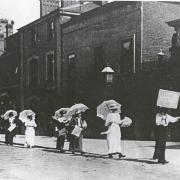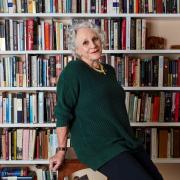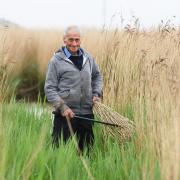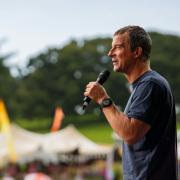The massacre of 97 Royal Norfolk soldiers at Le Paradis was a day of savagery etched into history books 80 years ago. Now you can help honour the lives lost

Before the war, Le Paradis in northern France might not have lived up to its English translation as ‘heaven’, but it was a bustling working village that was home to 400 people and boasted a church, a café and a shop. The land bore an uncanny resemblance to Norfolk: largely flat, with hedgerow-lined fields, reeds in the meadows and the rich soil providing a fine harvest of potatoes, sugar beet, maize and wheat.
For the Norfolk boys fighting in this corner of a foreign land in 1940, the echoes of home would have been loud and clear, a bittersweet reminder of what – and who – they had left behind. The 2nd Battalion, the Royal Norfolk Regiment was part of the force whose unenviable task it was to delay the German advance while the Dunkirk evacuation of 338,000 allied servicemen began.
Not every soldier was fortunate enough to step on to a boat and away from the fighting – some had to stay and buy time for their brothers-in-arms and some would pay the ultimate price for doing so. Ninety-seven men, the vast majority from the Royal Norfolks, would not live to see their homeland again, or even learn of the successes at Dunkirk.
Hitler’s invasion of France through the Netherlands and Belgium had started on May 10 1940 as Germany troops pushed the French Army and the British Expeditionary Force back to the Meuse River, en route to the English Channel. BEF units were immediately ordered to try to slow the advance of the Germans in northern France which would buy Allied troops the time to evacuate men at Dunkirk.
The Holy Boys, the Royal Norfolks’ nickname, found themselves facing a deadly German fighting force – the 3rd SS Division Totenkopf, the infamous Death’s Head Division with its terrifying skull and crossbones symbol. Formed through the expansion of the Kampfgruppe Eicke, it was named after its fanatical commander Theodor Eicke and many of its members had been transferred from concentration camp guard units or the Selbstschutz, ethnic German militias that had committed heinous war crimes in Poland.
The Totenkopf was formed from hardened soldiers, many of whom had been involved in multiple massacres of civilians and prisoners of war – the Battle of France in May 1940 was the first time it was deployed in action: within days the unit was responsible for yet more reckless slaughter. Fritz Knöchlein led the Death’s Head Division from the front; he was the Nazi that other Nazis thought over-zealous and cruel, a man who delighted in brutality.
During glorious weather, two units – the Royal Norfolks and the 8th Lancaster Fusiliers – were given the task of manning three French villages to help keep the Allies’ position secure. One of the three was Le Paradis.

At a farmhouse near Paradise Road, the two units, backed up by the Royal Scots, who were dug in opposite them, prepared to defend their Battalion headquarters at Duriez Farm.When the Germans attacked the farm, the fighting was fierce – but the Nazi firepower was far superior and with a lack of ammunition and no way to reach their Battalion and Brigade Headquarters, the Norfolks were eventually left with only one choice: surrender.
From the shelter of a cowshed next to the ruined farmhouse and under the orders of Major Lisle Ryder, 99 officers and men lay down their weapons and stepped out of the shed with a white towel draped over a rifle. The Royal Scots did the same.
What happened next was a dreadful lottery. Those who escaped from the farmhouse were taken as prisoners of war and survived, those sheltering in the cow barn at the point of surrender became victims of the massacre.
These 99 men were ordered by Knöchlein to march to a nearby barn where two machine guns were being manned by the No 4 Machine Gun Company. There, he told them to line up against the wall. And then he ordered the Totenkopf to gun down every man. Survivors were run through with bayonets, it was a terrible, horrific, brutal bloodbath.
It was May 27, 1940, Fritz Knöchlein’s 29th birthday.
Major Friedkerr von Riedner, who was at the scene the next day, reported that: “These people had almost all suffered head wounds from shots that must have been fired at close range. Some had their skulls smashed in, an injury that can almost only be caused by a blow from a gun butt or similar means.” On the same day, journalist Gunter d’Alquen from the Waffen-SS arrived at the scene of the massacre with the SS-Totenkopf deputy legal advisor.

He wrote: “It was possible to look into the back yard from the road… the corpses in British uniform were lying in the yard near the building. They were lying in such a position that one can assume they were killed by machine gun bursts. It struck me at once that the dead soldiers were not wearing helmets, nor did they have any equipment on them.”
Rumours about what had happened at Le Paradis drifted across northern France and, when they heard what had happened, other German divisions were outraged. General Erich Hoepner, commander of the German forces in France was no fan of Eicke and tried to have him dismissed after he learned of the massacre at Le Paradis – but his attempts failed. Other officers were said to have been so disgusted that they challenged Knöchlein to a duel.
But what the Death’s Head Division didn’t know was that two men had survived the massacre – and that one day, justice would be served.
Private William O’Callaghan, of Dereham, was one of only two survivors of the infamous massacre.
As bullets rained, O’Callaghan was hit in the arm and thrown to the ground. Within seconds, a fellow soldier fell on him, so he stayed still and played dead.
Hours later, when the Nazis were busy preparing a secret grave for the dead soldiers, Bill discovered there was another survivor of the massacre and, despite being wounded in the arm, put an unconscious Londoner, Private Albert Pooley, across his shoulders and escaped.

Dragging Pooley to the nearest cover available half a mile away – an impressive feat bearing in mind the dead weight he carried usually stood more than six feet tall and O’Callaghan was just 5ft 6in – the pair hid in ditches before finding refuge in a pig-sty.
Here, they survived on muddy water and raw potatoes for three days until they were found by the returning farm owner, Madam Duquenne-Creton and her son, Victor, who took them into their home at great personal risk.
Later, with their agreement and due in part to Pooley’s severe leg wounds, the two men were handed over to the German Wehrmacht 251 Infantry Division. Bert spent almost four years in hospital in France as a prisoner-of-war and was repatriated in 1943 as part of a prisoner exchange organised through the Red Cross; Bill spent five gruelling years as a prisoner-of-war in Poland.
Neither man forgot a moment of what they had witnessed, and when the war ended, both were ready to seek justice for their comrades, giving evidence at the War Crimes trial of Fritz Knöchlein. Pooley had returned to France in 1946 to find further witnesses to the massacre and he and Bert repeated their story to the War Crimes Investigation Unit in London which, in 1948, tracked down Knöchlein, who was by then living a quiet life as a civilian.
He denied the charges made against him and that he was even at Le Paradis on the day in question.
He claimed the British had been using illegal dum-dum bullets, he said the Norfolks had pretended to surrender and then turned on his men, and he said he had been brutalised while being held in the infamous London Cage.
His protestations fell on deaf ears and, in January 1949, he went to the gallows.
When we talk about the triumph at Dunkirk in 1940, it is easy to forget that to enable such a mass evacuation, for every seven men shipped across the English Channel between May and June 1940, one was left behind to have his fate decided by the Wehrmacht.
Villagers at Le Paradis tended the mass grave in the meadow by the barn where the soldiers had been killed until the remains of the murdered soldiers were exhumed in May 1942 for reburial in separate graves, now a sea of Portland stone in the peaceful churchyard, a corner of Norfolk in France.
Bill O’Callaghan was given the news that he had just six months to live in the summer of 1975 and his first thought was to return to Le Paradis to say goodbye to his colleagues before he fell into line with them in November of the same year.
Dereham’s bravest son had struggled with nightmares since the massacre, a tribute in the Eastern Daily Press from Bill Priest, historian of the Norfolk and Norwich branch of the Dunkirk Veterans’ Association, read: “A quiet slightly-built man he was the exact opposite of the fictional hero, yet a hero he undoubtedly was as his gallant actions demonstrated in a remote French farmyard on a summer’s night...
“For a man who became a legend in his own lifetime, through film and book, he led a very modest existence in an East Dereham council estate. If as the poet says ‘to live in the hearts of men, is not to die’, Bill will be remembered.”
Bert Pooley was reunited with “my boys” after his death in 1982 and his ashes were taken to Le Paradis so his last wish could be fulfilled.
After 42 years, Bert rejoined the ranks and was reunited with his brothers-in-arms, Norfolk’s heroes shoulder to shoulder, in death as they had been in life.
A permanent memorial in Norfolk
It took until 1970 for a memorial to be placed outside the French barn where 97 men met their brutal deaths in May 1940.
Eight years later, a further memorial was placed near the village church, a third memorial was erected in Le Paradis in 1991, a fourth in 1994, a fifth in 2018. There is no permanent memorial to the brave Holy Boys of the 2nd Battalion in Norfolk. The Le Paradis Commemoration Group is aiming to fund a memorial to remember the soldiers killed while helping to stop the German advance to Dunkirk.
The plan is for a substantial memorial placed in a central location in Norwich with an inscription to honour the 97 soldiers who paid the ultimate sacrifice.
Honorary president of the campaign is broadcaster Nick Conrad. He said: “These men are true heroes and their story must be enshrined in a prominent monument in our country. They did their duty. Now let us do ours.”
If you would like to donate to the campaign, visit memorial4leparadisheroes.uk or email memorial4leparadisheroes@gmail.com



























